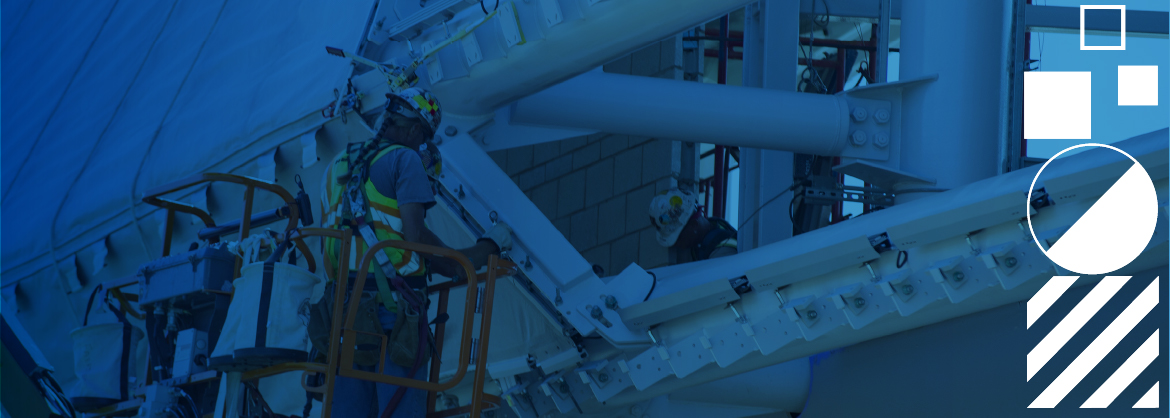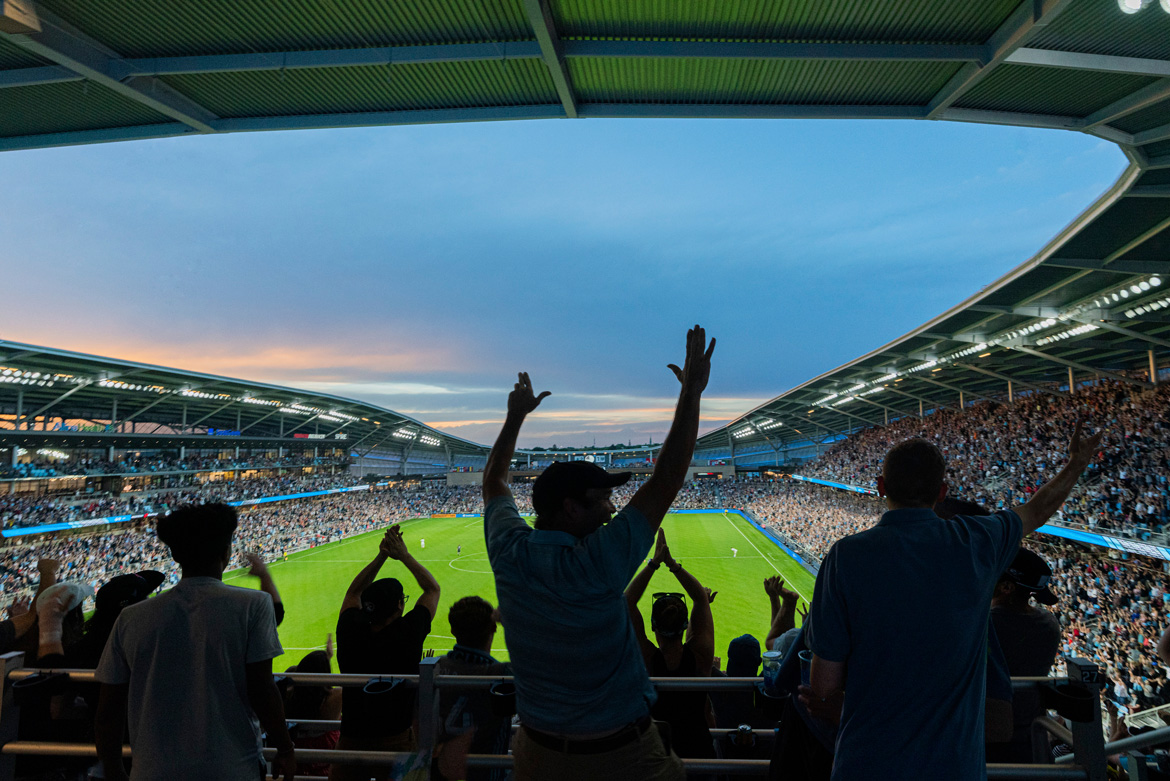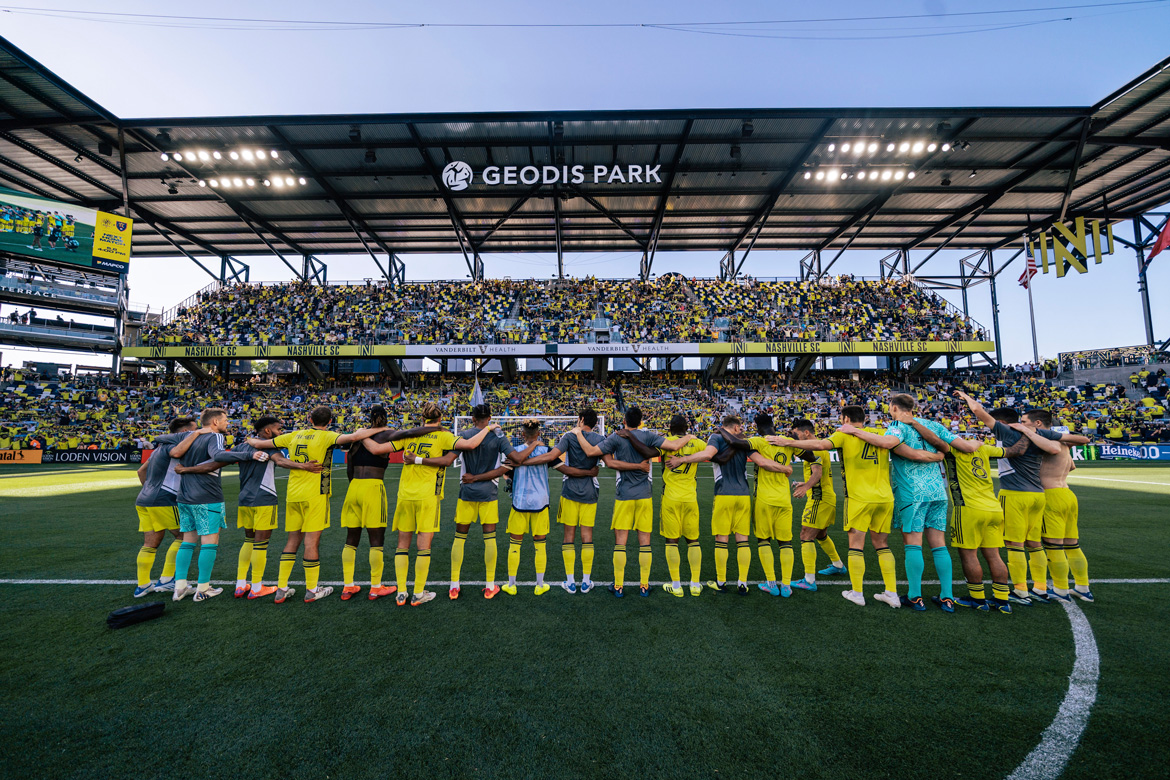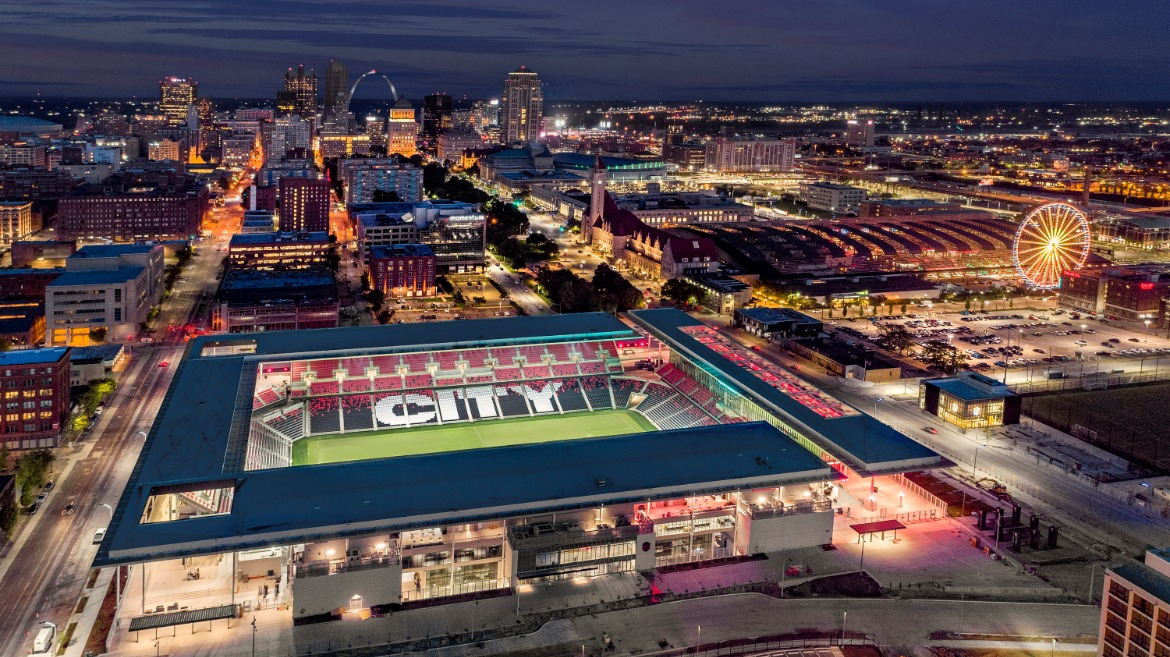
NFL stadiums might reign supreme in the U.S. when it comes to iconic sports facility designs, but MLS stadiums are quickly catching up. "Ten years ago, MLS stadium builds were relatively cheap and simple," says Dan Wacker, director of preconstruction at Mortenson. "But there has been substantial growth over the past years in the size and features of soccer stadiums."
Stadiums of the past focused more on seating capacity than design or comfort. Their minimalistic design sometimes featured small canopies that provided little coverage to protect fans from the elements. Priorities have since shifted to creating open-air stadiums focused on enhancing the fan experience and providing shade and comfort during the match. The goal is to achieve an eye-catching aesthetic that not only makes a statement but serves a specific function.
MLS Canopy Trends: Designing for the Ultimate Fan Experience
"The canopy is the largest and most significant architectural feature of an MLS stadium," explains Erik Thomas, design phase executive at Mortenson. "Owners want something that is not only aesthetically appealing but provides enough seating bowl coverage to keep fans comfortable."
With fan comfort a priority, owners often request canopies providing 100% seating coverage. However, 80-85% coverage is more typical due to the costs involved. "The design is what makes canopies the most expensive part of a soccer stadium," says Scott King, chief estimator at Mortenson. "Cantilevering is what allows canopies to stretch far over the seating bowl without using structural columns that obstruct views. The further it extends over the seating bowl, the more structural elements required for support—and that can drive up costs quickly."
Allianz Field, home of the Minnesota United FC, was inspired by European soccer venues and checks the boxes for both design and function. A 360-degree metal canopy flows around the stadium, covering the upper deck of the seating bowl and protecting fans from the sun and harsh elements. The curved canopy seamlessly integrates with a semi-opaque laminated PTFE (Polytetrafluoroethylene) mesh exterior. 1,700 LED lights built into the façade illuminate the stadium with vibrant colors at night. This ambitious design was perfectly executed, resulting in Allianz Field winning the national IDEAS2 Award for Innovative Design in Engineering and Architecture with Structural Steel.
GEODIS Park, home of the Nashville SC, is the largest soccer-specific stadium in the U.S. and Canada. The 360-degree cantilevered steel canopy provides 80% seating bowl coverage and features a layer of roofing membrane to provide enhanced rain protection for fans. Designers chose an industrial aesthetic to fit the Wedgewood-Houston neighborhood's historic architecture, with thin steel support columns that create a dramatic effect as they rise above the stadium's brick-clad ground level. GEODIS Park was ENR Southeast's 2022 Best Project Winner for Sports/Entertainment.
Aside from comfort, sound amplification is also a significant part of the fan experience. "The sound of cheers filling the stadium energizes the crowd and players," says Erik. "The hard, rigid surfaces of metal canopies help reflect that sound, but placing flat metal panels along the underside of the canopy enhances it even further. However, too much reverberation interferes with game audio from the announcers. To figure out the perfect balance, design teams often leverage an acoustician to calculate sound amplification based on the canopy size and materials used."
City Park Stadium, home of the St. Louis CITY SC, features a substantial 360-degree metal canopy designed for aesthetics, comfort, and sound. The canopy provides 80% seating bowl coverage and, despite its size, has a sleek, elegant look. Solid metal panels installed along the canopy's underside improve acoustics and fill the stadium with vibrant energy.
"Seating coverage, acoustics, and design are all major factors in modern MLS stadiums," says Logan Gerken, vice president, general manager at Mortenson. "Climate also plays a major factor in how you design the canopy. So, you're trying to balance those things to achieve an iconic design and ideal stadium performance, all while providing your fans the best experience possible."
What's Next in MLS Stadium Canopy Trends?
The U.S. currently has 26 MLS clubs, and that number is anticipated to keep growing. As venues continue maturing along with the league, you'll see architects and builders pushing the envelope and trying new innovative means and materials to construct these stadiums.
Retractable fabric roofs are a design feature Mortenson sees as a future trend in MLS. This solution provides better game-day certainty for playing conditions, sufficiently shades the seating bowl, and allows the sun and rain exposure needed to maintain a natural grass field. Additionally, the ability to enclose the stadium enables multi-purpose use for events. Transparent ETFE panels are another potential MLS canopy trend, driven by the successful use in NFL stadium roof designs.
"We've come a long way since the first-generation MLS stadiums," says Erik. "We're doing something new with every project. People are taking a more innovative approach to MLS stadium construction, and it's exciting to see the results.
Your trusted partner in sports facility construction
Mortenson is an MLS stadium contractor with decades of expertise. We don’t just build iconic stadiums. Each project is viewed as a partnership presenting the opportunity to bring something exciting to a community.
Let us help you build the stadium of your dreams.


